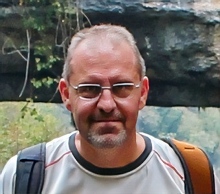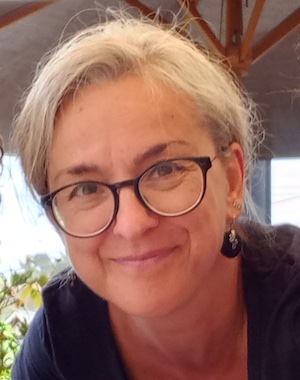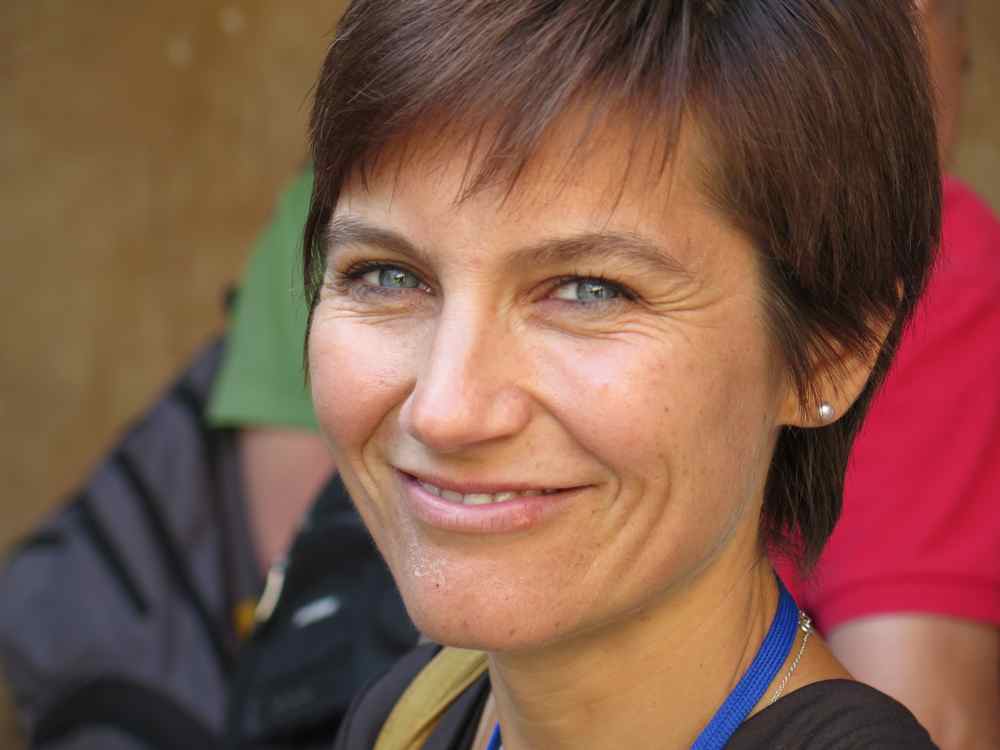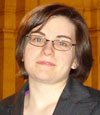Studying at the University of Verona
Here you can find information on the organisational aspects of the Programme, lecture timetables, learning activities and useful contact details for your time at the University, from enrolment to graduation.
Academic calendar
The academic calendar shows the deadlines and scheduled events that are relevant to students, teaching and technical-administrative staff of the University. Public holidays and University closures are also indicated. The academic year normally begins on 1 October each year and ends on 30 September of the following year.
Course calendar
The Academic Calendar sets out the degree programme lecture and exam timetables, as well as the relevant university closure dates..
| Period | From | To |
|---|---|---|
| I semestre | Oct 1, 2019 | Jan 31, 2020 |
| II semestre | Mar 2, 2020 | Jun 12, 2020 |
| Session | From | To |
|---|---|---|
| Sessione invernale d'esame | Feb 3, 2020 | Feb 28, 2020 |
| Sessione estiva d'esame | Jun 15, 2020 | Jul 31, 2020 |
| Sessione autunnale d'esame | Sep 1, 2020 | Sep 30, 2020 |
| Session | From | To |
|---|---|---|
| Sessione di laurea estiva | Jul 22, 2020 | Jul 22, 2020 |
| Sessione di laurea autunnale | Oct 14, 2020 | Oct 14, 2020 |
| Sessione di laurea invernale | Mar 16, 2021 | Mar 16, 2021 |
| Period | From | To |
|---|---|---|
| Festa di Ognissanti | Nov 1, 2019 | Nov 1, 2019 |
| Festa dell'Immacolata | Dec 8, 2019 | Dec 8, 2019 |
| Vacanze di Natale | Dec 23, 2019 | Jan 6, 2020 |
| Vacanze di Pasqua | Apr 10, 2020 | Apr 14, 2020 |
| Festa della Liberazione | Apr 25, 2020 | Apr 25, 2020 |
| Festa del lavoro | May 1, 2020 | May 1, 2020 |
| Festa del Santo Patrono | May 21, 2020 | May 21, 2020 |
| Festa della Repubblica | Jun 2, 2020 | Jun 2, 2020 |
| Vacanze estive | Aug 10, 2020 | Aug 23, 2020 |
Exam calendar
Exam dates and rounds are managed by the relevant Science and Engineering Teaching and Student Services Unit.
To view all the exam sessions available, please use the Exam dashboard on ESSE3.
If you forgot your login details or have problems logging in, please contact the relevant IT HelpDesk, or check the login details recovery web page.
Should you have any doubts or questions, please check the Enrollment FAQs
Academic staff
 maurizio.boscaini@univr.it
maurizio.boscaini@univr.it
 federico.busato@univr.it
federico.busato@univr.it

Cordoni Francesco Giuseppe
 francescogiuseppe.cordoni@univr.it
francescogiuseppe.cordoni@univr.it
 rosanna.laking@univr.it
rosanna.laking@univr.it

Mazzuoccolo Giuseppe
 giuseppe.mazzuoccolo@univr.it
giuseppe.mazzuoccolo@univr.it
 +39 0458027838
+39 0458027838
 franco.zivcovich@univr.it
franco.zivcovich@univr.it
Study Plan
The Study Plan includes all modules, teaching and learning activities that each student will need to undertake during their time at the University.
Please select your Study Plan based on your enrollment year.
1° Year
| Modules | Credits | TAF | SSD |
|---|
| Modules | Credits | TAF | SSD |
|---|
| Modules | Credits | TAF | SSD |
|---|
1 module between the following1 module between the following3 modules among the followingLegend | Type of training activity (TTA)
TAF (Type of Educational Activity) All courses and activities are classified into different types of educational activities, indicated by a letter.
Partial differential equations (2019/2020)
Teaching code
4S001097
Academic staff
Coordinator
Credits
6
Language
English
Scientific Disciplinary Sector (SSD)
MAT/05 - MATHEMATICAL ANALYSIS
Period
II semestre dal Mar 2, 2020 al Jun 12, 2020.
Learning outcomes
The course aims to give a general overview of the theoretical aspects of the most important partial differential equations arising as fundamental models in the description of main phenomena in Physics, Biology, economical/social sciences and data analysis, such as diffusion, transport, reaction, concentration, wave propagation, with a particular focus on well-posedness (i.e. existence, uniqueness, stability with respect to data). Moreover, the theoretical properties of solutions are studied in connection with numerical approximation methods (e.g. Galerkin finite dimensional approximations) which are studied and implemented in the Numerical Analysis courses.
Program
Derivation of some partial differential equations from the modelling.
Partial differential equations of first order: characteristics' method, eikonal equation. Weak solutions: scalar Conservation Law, introduction to the Calculus of Variations and to the Hamilton-Jacobi equation.
Linear partial differential equations of second order: classification.
Laplace equation and Poisson equation: fundamental solution, harmonic functions, Green's identity, Green's function, Poisson's formula for the ball, gradient estimates, Liouville's Theorem.
Elliptic equations: maximum principles, Hopf Lemma. Uniqueness theorems. Existence theorems: weak solutions via Lax-Milgram Theorem and classical solutions via Perron's method.
Introduction to the heat equation and to the wave equation.
Parabolic and hyperbolic equations: Galerkin method, introduction to Semigroup Theory.
| Author | Title | Publishing house | Year | ISBN | Notes |
|---|---|---|---|---|---|
| Yehuda Pinchover, Jacob Rubinstein | An Introduction to Partial Differential Equations | Cambridge | 2005 | ||
| Qing Han, Fanghua Lin | Elliptic Partial Differential Equations | American Mathematical Society | 2011 | ||
| D. Gilbarg - N. S. Trudinger | Elliptic Partial Differential Equations of Second Order | Springer | 1998 | 3-540-13025-X | |
| Evans, L. C. | Partial Differential Equations (Edizione 1) | American Mathematical Society | 1998 | 0821807722 | |
| András Vasy | Partial Differential Equations - An Accessible Route through Theory and Applications | American Mathematical Society | 2015 | 978-1-4704-1881-6 | |
| S. Salsa | Partial Differential Equations in Action | Springer Verlag Italia | 2008 | 978-88-470-0751-2 |
Examination Methods
REGULATIONS for the summer exam session in PDE. - COVID19 EMERGENCY
1. Oral exame with remote connection, dates to be arranged with the teachers.
2. Everybody must communicate his/her availability for the exam BEFORE 15th June, in order to compile a schedule in a reasonable amount of time.
3. Max 2 attempts. If you fail two times, your next attempt will be in the session of September. No exceptions.
4. Contents of the exam: the exam will concern for 2/3 on the first part, and for 1/3 on the second part, roughly according the partition of the lecture hours.
5. Description of the exam: in the exam there will be
- a practical part (which will play the role of the written part) in which it will be requested the solution of an exercise on a topic among: method of characteristics, conservation laws and Riemann's problem, calculus of variations.
- a theoretical question on the fist part of the course.
- a theoretical question on the second part of the course.
6. The knowledge of all the definition and statements is mandatory. At the beginning of June we will publish a list of the proofs that will be requested to know (we will not publish it before the beginnning of June for reasons that should be clear).
=======================
OLD REGULATIONS (SUSPENDED)
The exam will consist in an oral examination based on all the topics covered by the lectures. More precisely, the examination will be made of 3 steps: in the first step the student will be asked to report in details on a result randomly selected from a previously arranged list of results. Only if the student passes the first step he/she will be admitted to the second step of the examination, which will consist in a more general discussion on themes of the programme. In the third and last step the student will be asked to present his/her favourite topic.
The assessment will be based on the extent to which the student will overlook and master the main ideas and mathematical tools/techniques delivered by the lecturer during the course.
Type D and Type F activities
| years | Modules | TAF | Teacher |
|---|---|---|---|
| 1° 2° | Python programming language | D |
Maurizio Boscaini
(Coordinator)
|
| 1° 2° | SageMath | F |
Zsuzsanna Liptak
(Coordinator)
|
| 1° 2° | History of Modern Physics 2 | D |
Francesca Monti
(Coordinator)
|
| 1° 2° | History and Didactics of Geology | D |
Guido Gonzato
(Coordinator)
|
| years | Modules | TAF | Teacher |
|---|---|---|---|
| 1° 2° | Advanced topics in financial engineering | D |
Luca Di Persio
(Coordinator)
|
| 1° 2° | C Programming Language | D |
Sara Migliorini
(Coordinator)
|
| 1° 2° | C++ Programming Language | D |
Federico Busato
(Coordinator)
|
| 1° 2° | LaTeX Language | D |
Enrico Gregorio
(Coordinator)
|
| years | Modules | TAF | Teacher |
|---|---|---|---|
| 1° 2° | Axiomatic set theory for mathematical practice | F |
Peter Michael Schuster
(Coordinator)
|
| 1° 2° | Corso Europrogettazione | D | Not yet assigned |
| 1° 2° | Corso online ARPM bootcamp | F | Not yet assigned |
| 1° 2° | ECMI modelling week | F | Not yet assigned |
| 1° 2° | ESA Summer of code in space (SOCIS) | F | Not yet assigned |
| 1° 2° | Google summer of code (GSOC) | F | Not yet assigned |
| 1° 2° | Higher Categories - Seminar course | F |
Lidia Angeleri
(Coordinator)
|
Career prospects
Module/Programme news
News for students
There you will find information, resources and services useful during your time at the University (Student’s exam record, your study plan on ESSE3, Distance Learning courses, university email account, office forms, administrative procedures, etc.). You can log into MyUnivr with your GIA login details: only in this way will you be able to receive notification of all the notices from your teachers and your secretariat via email and soon also via the Univr app.
Double degree
The University of Verona, through a network of agreements with foreign universities, offers international courses that enable students to gain a Double/Joint degree at the time of graduation. Indeed, students enrolled in a Double/Joint degree programme will be able to obtain both the degree of the University of Verona and the degree issued by the Partner University abroad - where they are expected to attend part of the programme -, in the time it normally takes to gain a common Master’s degree. The institutions concerned shall ensure that both degrees are recognised in the two countries.
Places on these programmes are limited, and admissions and any applicable grants are subject to applicants being selected in a specific Call for applications.
It's online Erasmus + - double joint degree a.y. 2024/2025
The latest Call for applications for Double/Joint Degrees at the University of Verona is available now!
For the presentation of the LA and subsequent recognition of CFUs, please refer to the International Mobility Regulations.
Documents
| Title | Info File |
|---|---|
|
|
pdf, it, 461 KB, 24/11/23 |
|
|
pdf, it, 361 KB, 23/02/24 |
Alternative learning activities
In order to make the study path more flexible, it is possible to request the substitution of some modules with others of the same course of study in Mathematics at the University of Verona (if the educational objectives of the modules to be substituted have already been achieved in the previous career), or with others of the course of study in Mathematics at the University of Trento.Documents
| Title | Info File |
|---|---|
|
|
pdf, it, 167 KB, 27/08/21 |
|
|
pdf, it, 44 KB, 30/08/21 |
|
|
pdf, it, 113 KB, 30/08/21 |
Attendance
As stated in the Teaching Regulations for the A.Y. 2022/2023, except for specific practical or lab activities, attendance is not mandatory. Regarding these activities, please see the web page of each module for information on the number of hours that must be attended on-site.
Career management
Student login and resources
Graduation
Deadlines and administrative fulfilments
For deadlines, administrative fulfilments and notices on graduation sessions, please refer to the Graduation Sessions - Science and Engineering service.
Need to activate a thesis internship
For thesis-related internships, it is not always necessary to activate an internship through the Internship Office. For further information, please consult the dedicated document, which can be found in the 'Documents' section of the Internships and work orientation - Science e Engineering service.
Final examination regulations
Upon completion of the Master’s degree dissertation students are awarded 32 CFU. The final examination consists of a written dissertation on a specific topic agreed with a supervising professor and presented to a commission (Dissertation Committee).
The dissertation can be high-level theoretical or experimental (in the latter case, it may focus on either basic or applied research), it can deal with a theoretical topic or propose the resolution of a specific problem, or description of a work project, and may be carried out at universities, research institutions, schools, laboratories and companies in the framework of internships, traineeships, study stays in Italy and abroad. The dissertation must be original and written by the student under the guidance of a Supervisor. At the request of the student, the dissertation may be written and presented in Italian.
Professors belonging to the Mathematics Teaching Committee, the Department of Computer Science, and any associated departments may be appointed as Supervisors, as well as any professors from the University of Verona whose area of interest (SSD - Scientific-disciplinary Sector) is included in the teaching regulations of the degree programme.
Students may take the final exam only if meeting all requirements set by the School of Sciences and Engineering.
The Master's degree in Mathematics is obtained by successfully passing the final examination and thus earning the 120 CFU included in the study plan.
The material submitted by the student for the final examination will be examined by the Dissertation Committee, which comprises three professors, possibly including the Supervisor, and appointed by the President of the Teaching Committee. The final examination will be assessed based on the following criteria: the student’s performance during the entire study programme, the knowledge acquired during the dissertation work, their understanding of the topic and autonomy of judgment, their ability to apply such knowledge, and communicate effectively and fully all the outcomes of the work and the main results obtained.
The final examination and the degree ceremony will be carried out, in one of the four graduation sessions throughout the academic year, by the Final Examination Committee appointed by the President of the Teaching Committee, and made up of a president and at least four members chosen from among the professors of the University.
For further information, please refer to the Final examination regulations.
Documents
| Title | Info File |
|---|---|
|
|
pdf, it, 31 KB, 02/11/22 |
|
|
pdf, en, 31 KB, 02/11/22 |
|
|
pdf, it, 171 KB, 20/03/24 |
List of theses and work experience proposals
| theses proposals | Research area |
|---|---|
| Controllo di sistemi multiagente | Calculus of variations and optimal control; optimization - Hamilton-Jacobi theories, including dynamic programming |
| Controllo di sistemi multiagente | Calculus of variations and optimal control; optimization - Manifolds |
| Controllo di sistemi multiagente | Calculus of variations and optimal control; optimization - Optimality conditions |
| Formule di rappresentazione per gradienti generalizzati | Mathematics - Analysis |
| Formule di rappresentazione per gradienti generalizzati | Mathematics - Mathematics |
| Mathematics Bachelor and Master thesis titles | Various topics |
| Stage | Research area |
|---|---|
| Internship proposals for students in mathematics | Various topics |


























